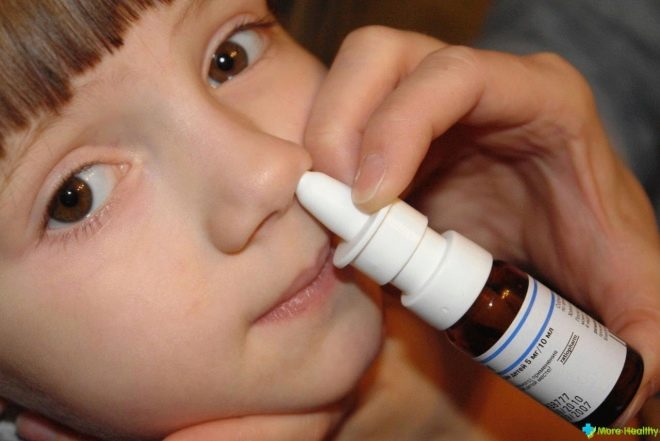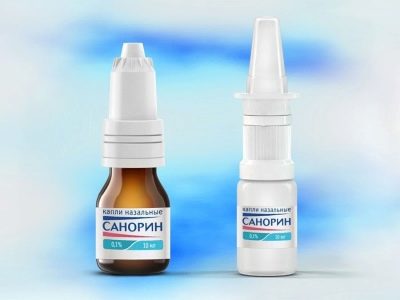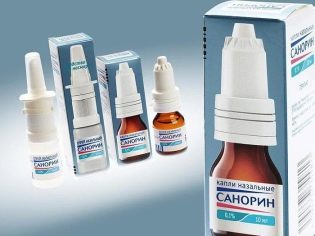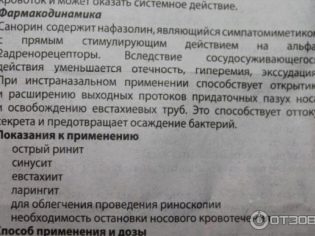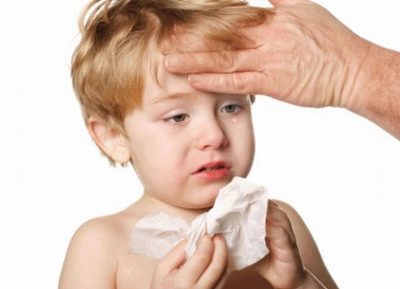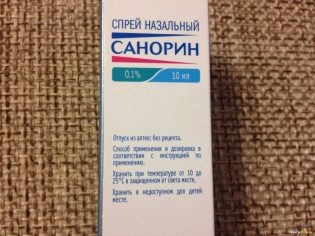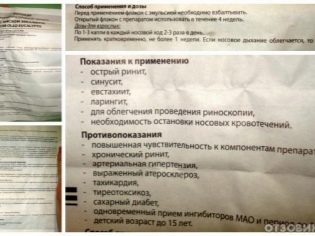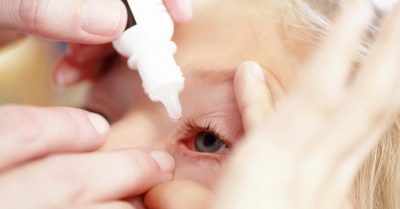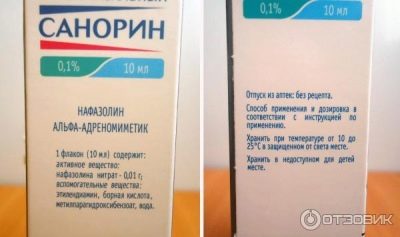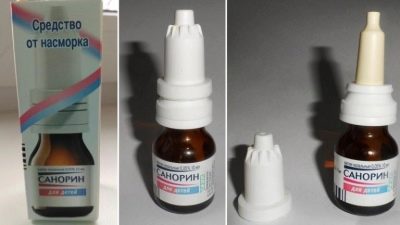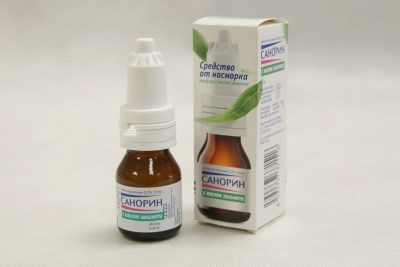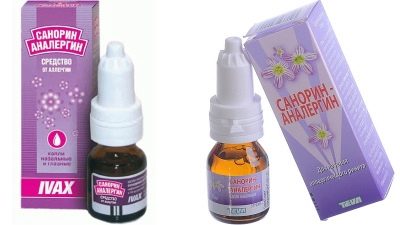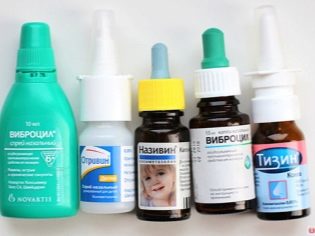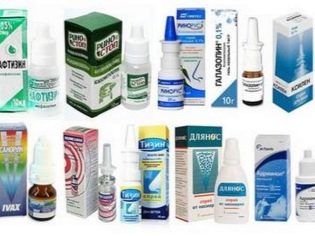Sanorin for children: instructions for use
Sanorin is a popular cure for the common cold and other diseases of ENT organs. Adults often use it for nasopharyngitis, sinusitis or otitis. But is it possible to give such a medicine in childhood? Are there children's forms of the drug and how to use them in order not to harm the health of babies?
Composition and forms of release
The action of Sanorin is provided by a substance called "naphazoline". It is in the form of nitrate contained in 1 ml of the drug in the amount of 500 μg (a 0.05% solution is obtained) or 1 mg (the concentration of such a solution is 0.1%). Auxiliary components of the medication are methyl parahydroxybenzoate and boric acidas well as water and ethylenediamine.
Sanorin 0.05% is available only in the form of nasal drops. This medicine is sold in dropper bottles made of tinted glass, inside of which there is 10 ml of clear liquid without any color.
A solution with a concentration of 0.1% is available in two forms - nasal drops and nasal spray. Both drugs are colorless transparent liquid and are sold in 10 ml. The difference between such medicines is only a bottle - it is glass in drops and is equipped with a dropper, and in a spray bottle is made of plastic and supplemented with a mechanical dispensing device.
Operating principle
Naphazoline in the composition of Sanorin is an alpha adrenergic mimic because it affects alpha-2 adrenergic receptors that are located in the vessels of the nasopharyngeal mucosa. The vessels quickly and for a long time narrowed, which is manifested by a decrease in redness, swelling and the amount of discharge. The use of Sanorin in rhinitis facilitates breathing, and in conjunctivitis, reduces puffiness.
Indications
Sanorin is prescribed for:
- acute rhinitis;
- laryngitis;
- Eustachitis;
- sinusitis;
- otitis media;
- nasal bleeding.
Also, the tool is used in ENT practice before performing rhinoscopy. 0.05% drops can also be prescribed for bacterial conjunctivitis (as one of the additional treatments for this disease).
From what age is assigned to children?
Sanorin with a concentration of the active ingredient of 0.05%, produced in drops, can be applied to children over 2 years old. If the child is not yet 2 years old, it is prohibited to treat him with this medicine. This medication is called Children's Sanorin, because the more concentrated medicine (0.1% solution) is not used in patients younger than 15 years.
Contraindications
Sanorin treatment is prohibited when:
- intolerance to any ingredient drops or spray;
- runny nose with a chronic course;
- atrophic form of rhinitis;
- increased blood pressure;
- tachycardia;
- angle-closure glaucoma;
- diabetes;
- thyrotoxicosis.
Side effects
When treating Sanorin, such negative effects as heart palpitations, an allergic rash, nausea, irritability, high blood pressure or headaches can occur. Sometimes the drug causes a local reaction in the form of swelling or redness of the mucous membrane.
If you use the drug for more than a week, it often leads to irritation or swelling of the mucous membranes. With long-term treatment to Sanorin develops addiction.
Instructions for use
Children's Sanorin is used in children 2-15 years old so:
- The drug is dripped into the nose 2 or 3 times a day.
- The interval of use of the drug should be more than 4 hours.
- A single dosage of the drug are 1-2 drops. In such an amount, the agent is injected in turn first into one nasal passage and then into the other.
- Sanorin should be applied short course. As soon as the patient's condition improves, it is immediately canceled. Children are recommended to take this medicine for no longer than three days in a row.
- Further use of the drug is possible only after a break of several days.
- If the medication does not help in the first 2-3 days of treatment, the child should be shown to the doctor.
- If the reason to appoint Sanorin is bleeding from the nose, then use cotton swabs to stop it. A 0.05% solution is applied to them, and then tampons are inserted into the nasal passages.
- If the medication was prescribed for conjunctivitis, then it should be dripped into the conjunctival sac 1 or 2 drops three to four times a day.
Teenagers over 15 years old are prescribed Sanorin with a concentration of 0.1%. If this medication is in drops, then 1-3 drops will be its dose for each nasal passage. If a spray is used, 1 to 3 doses are injected into each nostril. The drug is used with a frequency of 3-4 times a day for no longer than 3 days.
Before using Sanorin for the first time in a spray, you need to press the dispenser several times until an aerosol cloud appears.
Overdose
With the excessively frequent introduction of Sanorin into the nasal cavity or very long treatment with such a preparation, the mucous membrane often swells, and the patient has a feeling of congestion. Overdose of the drug is dangerous for young children, since excess naphazoline affects the central nervous system of young patients and provokes drowsiness, bradycardia, a decrease in body temperature and other dangerous symptoms.
Interaction with other drugs
Sanorin is forbidden to combine with MAO inhibitor drugs, since their combined use will increase the risk of high blood pressure. Using Sanorin will also slow down the absorption of local anesthetics.
Terms of sale
All forms of Sanorin are OTC drugs. On average, for one bottle of drops in the nose you need to pay 110-130 rubles.
Storage conditions
The shelf life of the sealed medication is 4 years. Before it expires, Sanorin should be kept in a place hidden from the kids at a temperature of 10-25 degrees Celsius. The solution from the opened bottle of drops can be stored for no longer than 4 weeks. If more than a month has passed since the first use, this medicine must be discarded.
Reviews
About Sanorin there are different reviews. In positive parents confirm the high efficacy of the drug and the rapid action in the common cold. The effect of the drug most patients notice within five minutes after its introduction. According to moms, the action of Sanorin lasts up to 4-6 hours, but many are unhappy with the rapid development of addiction and the need to interrupt treatment.
Negative reviews also mention the appearance of side effects, such as redness of the mucous membrane or nausea. The taste of Sanorin is called unpleasant, but the price is considered affordable, therefore, cheaper analogues are usually not sought.
Other types of drug
Sanorin with eucalyptus oil
Among the excipients of such a drug, the main ingredient of which is also nafazolin, is eucalyptus oil. The drug is presented in drops in the nose, and the concentration of naphazoline in it is 0.1%. The drug is produced in bottles with a dropper with a capacity of 10 ml. The average price of one package is 150 rubles.
Such a drug is required for rhinitis, sinusitis, laryngitis or nosebleeds, but is contraindicated for children under 15 years of age and more often provokes allergic reactions.
A teenager is prescribed this medicine 1-3 drops in each nostril. The drug is used up to 3 times per day for no longer than one week, as it is addictive.
Like the usual Sanorin, the drug with eucalyptus oil is a non-prescription drug. The shelf life of a sealed bottle is 4 years, and after the first use the medication should be stored for no more than 4 weeks.
Sanorin-Xylo
The main difference of this drug from the usual Sanorin is another active substance. Action Sanorin-Xylo provides xylometazoline at a concentration of 0.05% (such drops are prescribed to children over 2 years old) or 0.1% (this medicine is contraindicated in patients under six years old).
The drug is used in the treatment of rhinitis of different nature, including bacterial and allergic rhinitis. As usual Sanorin, it is used for otitis or sinusitis. One bottle of child Sanorin-Xylo costs about 70 rubles and is sold without a prescription. The shelf life of this drug - 3 years, but after opening the drops are stored only 6 months.
Sanorin-Analegin
Such an agent in the form of droplets contains not only naphazoline at a dose of 250 μg / 1 ml, but also the second active ingredient, which belongs to the H1-histamine receptor blockers. It is antazolin at a dose of 5 mg / 1 ml. Thanks to this combination, in addition to the vasoconstrictive action of the drug, there is also an antiallergic effect. One of the dosage forms Sanorin-Analegina are drops, used not only in the nose, but also in the eyes (they are issued in the bottles equipped with a rubber pipette).
The drug is prescribed for severe rhinorrhea and is especially effective for acute rhinitis, which has an allergic nature. At an early age it is not used, because the drops are contraindicated for patients younger than 16 years. You can purchase such medication in a pharmacy without a prescription by paying an average of 270 rubles for one bottle. Its shelf life is 2 years.
For longer than 1 week, this remedy cannot be dripped in order not to provoke atrophy and other side effects.
Analogs
If it is impossible to use Sanorin in case of rhinitis, the doctor will recommend another vasoconstrictor drug, eg:
- Naphthyzinum;
- nazol Baby;
- Noxpray
- xylene;
- pinosol;
- naivin;
- nazic;
- for carrying;
- galazolin;
- Otrivin;
- rhinorus.
Such medicines contain different active ingredients, therefore, contraindications and age range for their use are different. For this reason, the choice of the analogue of Sanorin is best to entrust the ENT doctor, pediatrician or other specialist.
About when to apply vasoconstrictor drops to children, Dr. Komarovsky will tell in the next video.

